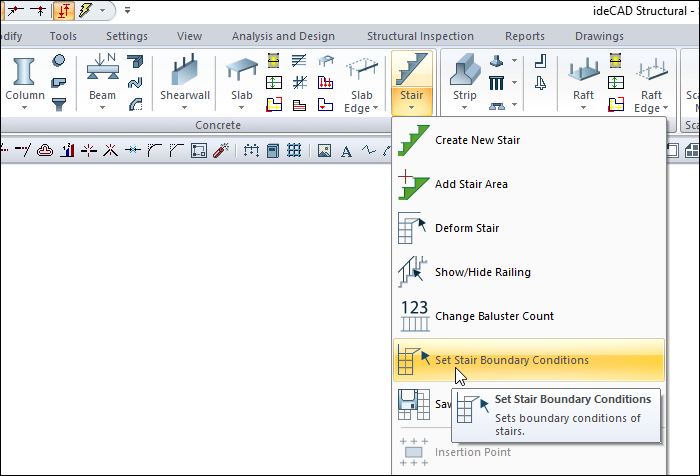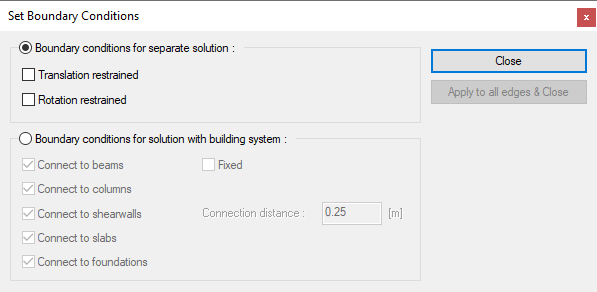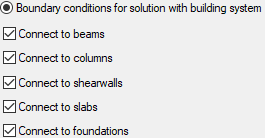Setting Stair Boundary Conditions
With the Set Stair Boundary Conditions command, the edges of the stairs are fixed to rotation and/or translation, or they are solved together with the structure with the semi-rigid diaphragm acceptance solution. Before calculating the stairs, the boundary properties of the edges of the stairs must be determined.
Location of Set Stair Boundary Conditions Command
You can reach it under the Concrete tab in the ribbon menu under the Concrete heading.

Usage Steps
Click the set stair boundary conditions icon.
The set boundary conditions dialog will open.
Click on the edge of the stair for which you want to change the support conditions.
In the set boundary conditions dialog, select the option you want.
Click the OK button to exit the dialog.
Set Boundary Conditions Dialog

Specifications |
|---|
Boundary conditions for separate solution  If a solution is made with the assumption of a fully rigid diaphragm, the stair is solved separately from the structure. In this case, the support conditions of the stair edges are determined by two options: rotation and translation. Stair loads should also be applied to the structure. |
Translation restrained  If checked, the selected edge is restrained against translation. |
Rotation restrained  If checked, the selected edge is restrained against rotation. |
Boundary conditions for solution with building system  If the solution is made with the assumption of semi-rigid diaphragm, the structure - the stair is solved together. In this case, the objects to which the edges of the stairs are connected are determined by the options given in the dialog. |
Fixed  The edge of the stair is considered a fixed support. |
Connection distance  Give the amount of distance that will be required for the stair edge to be attached to the support. |
Next Topic
